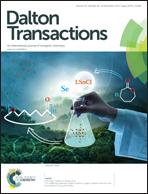Reversible single-crystal-to-single-crystal transformation from a mononuclear complex to a fourfold interpenetrated MOF with selective adsorption of CO2†
Abstract
The reversible crystal transformation between the mononuclear complex [Cu(tzbc)2(H2O)4] (1) and the 4-fold interpenetrated diamondoid MOF [Cu(tzbc)2] (2) was chemically implemented and structurally interpreted. Interestingly, despite 4-fold interpenetration, desolvated 2 with 1D channels and rich N-groups shows exclusive CO2 adsorption of up to 12.5 wt% at room temperature and low pressure, indicating potential application in the separation of industrial and automobile exhaust.


 Please wait while we load your content...
Please wait while we load your content...